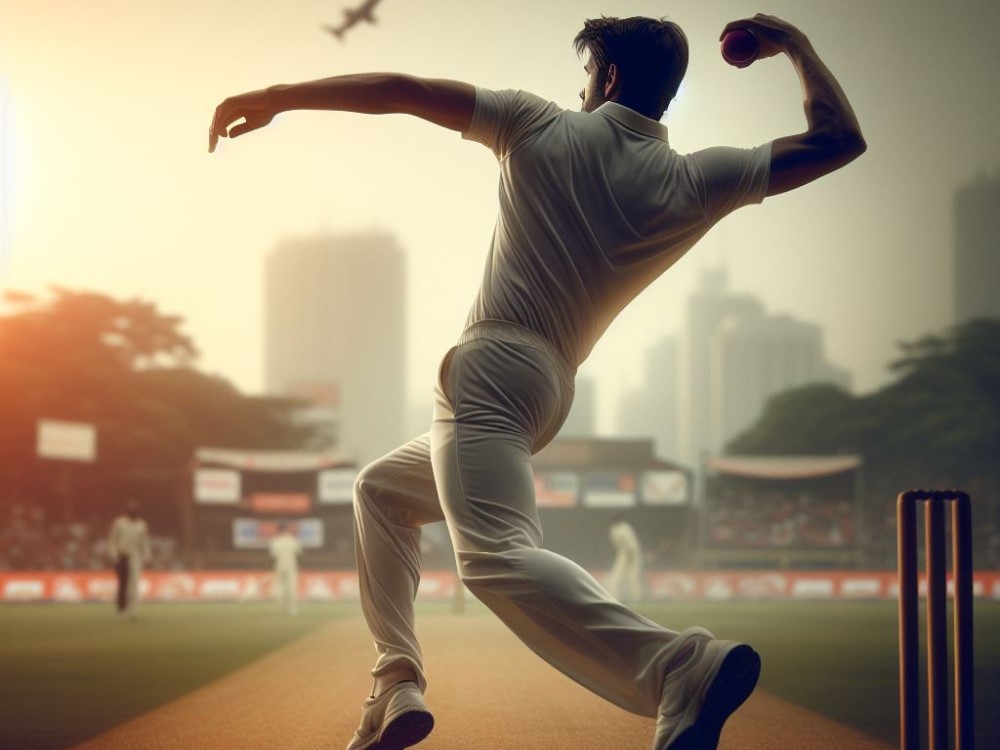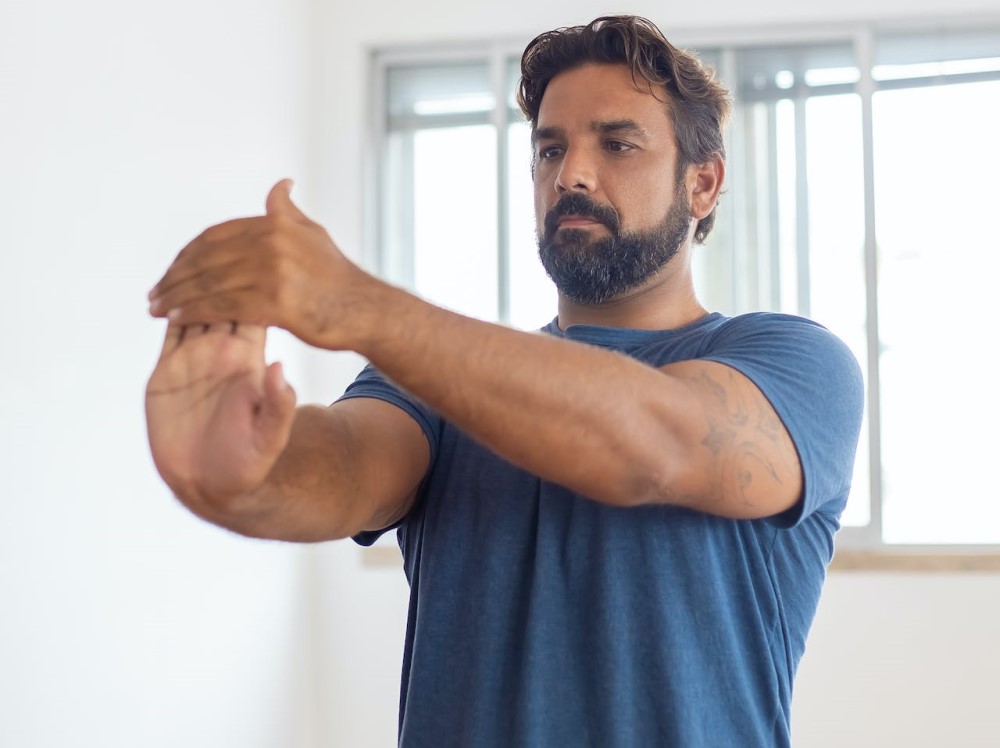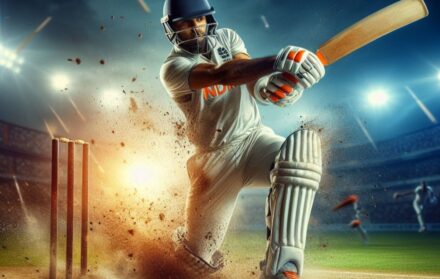
What Are The Most Effective Cricket Bowling Workouts
Cricket bowling plays a vital role in the game, as it is the bowlers who hold the power to take wickets and restrict the opposition’s run-scoring. Effective cricket bowling requires a combination of skill, technique, strength, conditioning, and proper nutrition.
There are different types of bowling, including fast bowling, spin bowling, and swing bowling, each requiring specific skills and techniques. Key attributes for effective bowling include bowling speed, accuracy, consistency and control.
To enhance performance, cricket bowlers can benefit from specific strength and conditioning workouts, flexibility and mobility exercises, and technique and skill development drills. Proper nutrition and hydration strategies are crucial to support optimal performance and aid in post-match recovery.
By understanding and implementing these aspects, cricket bowlers can improve their effectiveness on the field and contribute significantly to their team’s success.
Why is Cricket Bowling Important?

Cricket bowling is a crucial aspect of the game that can determine its outcome. Good bowling can restrict the opposition’s score and take crucial wickets. Bowling offers various advantages: it puts pressure on batsmen, disrupts their rhythm, and creates scoring opportunities for the fielding team.
Skilled bowlers can deliver different types of deliveries such as fast, spin, and swing, keeping the batsmen guessing. Bowling also requires physical fitness, strength, agility, and skill. Cricket bowling plays a vital role in the game and can heavily influence its course.
To improve your cricket bowling, consider incorporating the following suggestions:
1. Practice regularly to enhance your technique and accuracy.
2. Focus on strength and conditioning workouts to develop the necessary physical attributes.
3. Work on flexibility and mobility exercises to improve your range of motion and prevent injuries.
4. Engage in nutrition and hydration strategies to maintain optimal performance.
By following these recommendations, you can enhance your cricket bowling skills and contribute significantly to your team’s success.
Types of Cricket Bowling
Cricket bowling is an art, and understanding its different types is key to mastering the game. In this section, we’ll explore the diverse world of cricket bowling, from the thunderous speed of fast bowling to the strategic spins of spin bowling, and the graceful intricacies of swing bowling.
Get ready to dive into the fascinating sub-sections of this sport, where each technique brings its own challenges and rewards. So, grab your cricket ball and let’s uncover the secrets of the different types of cricket bowling!
1. Fast Bowling
Fast Bowling is a crucial element in the game of cricket, demanding a combination of technique, strength, and speed. To enhance your abilities as a fast bowler, here are a few steps to follow:
- Gain mastery over the fundamentals: Prioritize a smooth run-up, a powerful front arm, an efficient release, and a strong follow-through.
- Build strength and power: Include exercises such as squats, deadlifts, and plyometrics in your training routine to develop explosive power and velocity.
- Focus on accuracy: Dedicate practice sessions to consistently hitting specific spots on the pitch, aiming to improve your effectiveness as a fast bowler.
- Develop control: Concentrate on bowling with precise control and accuracy, adjusting your line and length based on the circumstances.
- Enhance your skill set: Add variety and unpredictability to your bowling by utilizing techniques like reverse swing, yorkers, and bouncers.
By diligently following these steps and consistently practicing and refining your skills, you can significantly improve as a fast bowler in the game of cricket.
2. Spin Bowling
Spin bowling, also known as spinners, is a specialized technique employed in the game of cricket to deceive batsmen by imparting spin on the ball. It is considered to be an indispensable skill for bowlers, necessitating dedicated practice and mastery of proper technique. Let us delve into some key aspects of spin bowling that make it an important facet of the game:
1. Grip: A spin bowler adeptly holds the cricket ball with their fingers, adopting a specific grip to generate the desired spin. The precise positioning of the fingers determines both the type and direction of the spin that can be imparted.
2. Variations: Skilled spin bowlers have the ability to produce a wide array of spin variations. These may include off-spin and leg-spin among others. By varying the flight, speed, and spin of the ball, spin bowlers can keep batsmen guessing and add an element of unpredictability to their deliveries.
3. Flight and Loop: A primary objective of spin bowlers is to give the ball adequate air time, creating a trajectory that deceives the batsman, thus enhancing the probability of taking wickets. By mastering the art of flight and loop, spinners can confound batsmen and induce false shots.
4. Drift and Dip: Spin bowlers possess the skill to exploit air movement to their advantage. They can manipulate the ball in such a way that it deviates from its anticipated path, making it challenging for batsmen to execute their shots with precision.
5. Control and Accuracy: Spin bowlers must possess exceptional control over their line and length. This enables them to target specific areas on the pitch and build pressure on batsmen, increasing the likelihood of inducing errors.
6. Strategic Field Placements: The collaboration between captains and spin bowlers plays a pivotal role in setting up fielders at strategic positions. This ensures that the batsman’s weaknesses are effectively capitalized upon, thus maximizing the chances of dismissing them.
The art of spin bowling demands a combination of skill, sustained practice, and an in-depth understanding of various techniques. It constitutes a critical component of a cricket team’s bowling attack, perfectly complementing the efforts of fast bowlers and swing bowlers.
3. Swing Bowling

Swing bowling is a crucial technique in cricket that involves making the ball move sideways in the air. To become effective at swing bowling, follow these steps:
- Choose the right ball: A ball with a pronounced seam and natural shine is ideal for swing bowling.
- Grip: Hold the ball with the shiny side on one side and the seam upright, ensuring a secure grip.
- Master swing bowling: Maintain a smooth and controlled run-up, focusing on generating maximum speed and releasing the ball with a relaxed wrist.
- Bowling action: Perfect a side-on bowling action to create the right release angle for swing.
- Control the shine: Polish one side of the ball with sweat, saliva, or any other substance to maintain the shine.
- Vary the conditions: Utilize swing bowling in different weather conditions and pitches to understand its behavior.
Key Attributes for Effective Bowling
When it comes to effective cricket bowling, certain key attributes can make all the difference. In this section, we will unravel the secrets behind becoming a top-notch bowler. From increasing bowling speed to honing accuracy and control, we’ll explore how these attributes contribute to a bowler’s success on the pitch.
So, fasten your seatbelts and get ready to discover the essential elements that can take your bowling skills to new heights.
1. Bowling Speed
Bowling speed plays a vital role in the success of cricket bowlers. It exerts pressure on batsmen and increases the likelihood of taking wickets. To enhance their bowling speed, bowlers should concentrate on specific exercises.
Plyometric workouts, such as squat jumps and box jumps, are excellent for developing explosive power. Additionally, medicine ball routines, like rotational throws, effectively strengthen the core and enhance upper body strength.
Resistance training, which includes exercises like squats and deadlifts, is essential for building muscle strength and power. By incorporating these exercises into their regular training regimen, cricket bowlers can achieve optimal bowling speed.
Pro-tip: Prioritize proper warm-up exercises before engaging in these workouts to prevent injuries. It is also advisable to seek guidance from a fitness professional to ensure proper technique.
2. Accuracy
Accuracy is an essential component of cricket bowling that plays a vital role in determining the bowler’s capability to consistently hit the desired target. To enhance accuracy, bowlers must pay attention to several key attributes:
1. Repeatable Action: It is crucial for bowlers to develop a bowling action that is both consistent and repeatable. This enables them to consistently deliver the ball to the desired location.
2. Line and Length Control: Maintaining a steady line and length is of utmost importance as it enables bowlers to exert pressure on the batsman and create opportunities for scoring.
3. Variation Skills: Bowlers with the ability to vary the pace, length, and line of their deliveries can deceive batsmen and increase their chances of taking wickets.
By consistently practicing drills and participating in match simulations, bowlers can enhance their accuracy and become more effective in their bowling performances.
3. Control
Effective control is a crucial aspect of cricket bowling. It involves the ability to consistently place the ball accurately and hit the desired line and length. This helps keep the batsman under pressure and increases the chances of getting wickets.
To improve control, bowlers can focus on specific techniques and drills. They can work on their wrist position, body alignment, and follow-through to ensure a consistent release point. Incorporating movement variations such as slower balls or cutters can add deception to their bowling.
Practicing control regularly can enhance a bowler’s accuracy and contribute to their overall effectiveness on the field.
Pro-tip: Visualize your target and focus on maintaining a stable core while delivering the ball, as it can greatly improve your control.
Strength and Conditioning: Cricket Bowling Workouts

Cricket bowling requires a combination of skill, technique, and physical fitness. In this section, we dive into the world of strength and conditioning workouts specifically designed for cricket bowlers.
Get ready to explore explosive plyometric exercises, power-packed medicine ball workouts, and the benefits of resistance training. Unleash your potential on the pitch by incorporating these tried-and-tested workouts into your training regimen. Lace up your boots, grab your gear, and let’s take your cricket bowling game to the next level!
1. Plyometric Exercises
Plyometric exercises are of utmost importance for cricket bowlers as they are instrumental in enhancing explosive power and speed, which are indispensable for delivering fast and accurate balls. These exercises involve dynamic stretching and contracting of muscles, thereby augmenting muscle strength and power.
Plyometric exercises originated in the 1960s when Soviet scientist Yuri Verkhoshansky pioneered their development to train Olympic athletes and enhance their explosive power and performance.
In the present day, these exercises hold immense significance in the training programs of cricket bowlers who aspire to elevate their skills and overall athletic performance.
2. Medicine Ball Workouts
Medicine ball workouts are a highly effective way to enhance strength and power specifically for cricket bowling. Here is a step-by-step guide on how to naturally incorporate medicine ball exercises into your training routine:
1. Medicine ball slams: Start by holding the medicine ball above your head and forcefully slamming it into the ground. This particular exercise is beneficial for developing explosive power in the upper body.
2. Medicine ball twists: Stand with your feet hip-width apart and grasp the medicine ball in front of your chest. Proceed to twist your torso from one side to the other, leveraging the medicine ball to create resistance. This exercise significantly improves rotational strength, a crucial element for generating power in your bowling action.
3. Medicine ball lunges: Grasp the medicine ball close to your chest and take a step forward into a lunge position. As you lower your body, the medicine ball provides resistance, effectively challenging your leg muscles while simultaneously enhancing stability.
By incorporating these medicine ball workouts into your training routine, you can effectively elevate your strength and power levels, ultimately resulting in improved performance on the cricket field.
3. Resistance Training
Resistance training is an essential component of fitness for cricket bowlers. It helps develop the strength and power needed to deliver a fast and accurate ball. Here are some effective resistance training exercises for cricket bowlers:
- Squat: Strengthen the leg muscles, especially the quadriceps and glutes, which are important for explosive movements and resistance training.
- Deadlift: Build strength in the hamstrings and lower back, improving the bowling action and reducing the risk of injury through resistance training.
- Bench press: Develop upper body strength, particularly in the chest, shoulders, and triceps, enhancing ball control and accuracy with resistance training.
- Shoulder press: Strengthen the shoulder muscles, improving bowling technique and reducing the risk of shoulder injuries by incorporating resistance training.
Incorporating resistance training exercises into a cricket bowler’s training program can significantly enhance performance on the field.
Flexibility and Mobility Exercises for Cricket Bowling

Enhancing your performance on the cricket field requires more than just strength and speed. In this section, we dive into the realm of flexibility and mobility exercises for cricket bowling. Discover the power of dynamic stretching, the balance of yoga and Pilates, and the rejuvenating benefits of foam rolling.
Unleash your potential on the pitch with these essential exercises that will keep your body supple, agile, and ready for the challenges of cricket bowling.
1. Dynamic Stretching
Dynamic stretching is an essential part of a cricket bowler’s warm-up routine to improve flexibility, prevent injuries, and optimize performance. Here are some steps to follow for an effective dynamic stretching routine:
- Arm Circles: Stand with your feet shoulder-width apart and extend your arms out to the sides. Begin making small circles with your arms, gradually increasing the size of the circles.
- Leg Swings: Stand next to a wall or a partner for support. Swing one leg forward and backward, gradually increasing the range of motion. Repeat with the other leg.
- Hip Rotations: Stand with your feet shoulder-width apart and place your hands on your hips. Rotate your hips in a circular motion, first clockwise, then counterclockwise.
- Walking Lunges: Take a step forward with your right leg and lower your body into a lunge position. Push off with your right foot and bring your left foot forward into the next lunge. Repeat for several steps.
- Trunk Twists: Stand with your feet shoulder-width apart and place your hands on your hips. Twist your torso to the left and then to the right, keeping your hips stable.
Remember to perform dynamic stretching in a controlled and deliberate manner, gradually increasing the intensity and range of motion. It is essential to listen to your body and avoid any pain or discomfort during the stretches.
2. Yoga and Pilates
Yoga and Pilates are highly beneficial for cricket bowlers, helping to improve strength, flexibility, balance, and body control. Here are some key exercises to incorporate into a training routine:
- Dynamic stretching: Perform movements like leg swings and arm circles to warm up and increase flexibility.
- Yoga poses: Incorporate poses like downward facing dog, warrior, and pigeon to enhance strength, flexibility, and body awareness.
- Pilates exercises: Focus on core stability and alignment with exercises such as the plank, bridge, and single-leg circles.
Incorporating Yoga and Pilates into a cricket bowler’s fitness regimen can contribute to better performance, injury prevention, and overall well-being. Remember to consult with a coach or trainer for personalized recommendations.
3. Foam Rolling
Foam rolling is a beneficial technique that cricket bowlers can utilize to improve flexibility, reduce muscle soreness, and enhance recovery. Here are some simple steps to effortlessly incorporate foam rolling into your routine:
- Commence by positioning yourself comfortably on the floor with a foam roller.
- Direct your attention to various muscle groups, including the hamstrings, quadriceps, calves, and upper back.
- Gently roll over each muscle, gently exerting pressure on any areas that feel tight or tender.
- Dedicate at least 30-60 seconds to each muscle group, allowing the foam roller to work its magic.
- Remember to take deep breaths and relax while performing the rolling motion.
Pro-tip: To optimize performance, make sure to incorporate foam rolling into your pre-and post-training routine. This not only enhances blood circulation but also reduces muscle tension.
Technique and Skill Development Drills

Looking to enhance your cricket bowling skills? In this section, we’ll dive into the world of technique and skill development drills. Get ready to ace your bowling game with a closer look at the specific sub-sections: bowling drills for fast bowlers, spin bowlers, and swing bowlers. Uncover the secrets behind these effective workouts that can help you level up your bowling game. So, let’s get started and bring your A-game to the pitch!
1. Bowling Drills for Fast Bowlers
- Bowling Drills for Fast Bowlers: To enhance your skills as a fast bowler in cricket, it is crucial to concentrate on specific bowling drills. Here are some essential drills for fast bowlers:
- Front Foot Drive Drill: Practice the art of driving the ball with a front foot stride while giving paramount importance to proper technique and timing.
- Single Stump Target Drill: Improve your accuracy by consistently aiming to hit a single stump.
- Sliders Drill: Emphasize on both speed and accuracy by delivering the ball with a low trajectory.
These drills play a pivotal role in the development of fast bowlers skills such as control, line, and length. Regularly incorporating these drills into training sessions is vital to enhance performance and become a more efficient fast bowler.
2. Bowling Drills for Spin Bowlers
To improve spin bowling skills in cricket, spin bowlers can incorporate the following bowling drills into their training regimen:
- Finger Flick Drill: Practice flicking the wrist and fingers to create spin on the ball. Focus on generating maximum revolutions.
- Rope Target Drill: Hang a rope horizontally at waist height and try to hit specific areas on the rope consistently with your deliveries to improve accuracy.
- Spot Bowling Drill: Aim to consistently land the ball in specific areas on the pitch, working on line and length variations.
By regularly practicing these bowling drills, spin bowlers can enhance their control, accuracy, and ability to generate spin. It is important to incorporate these bowling drills into a well-rounded training program that also includes strength and conditioning workouts, flexibility exercises, technique development, and proper nutrition and hydration strategies.
3. Bowling Drills for Swing Bowlers
Bowling Drills for Swing Bowlers are essential for improving technique and maximizing effectiveness on the field.
- 1. Wrist Position Drill: It is crucial to focus on maintaining a relaxed wrist position while practicing swinging the ball in both directions.
- 2. Target Practice Drill: Set up targets on the pitch and consistently aim to swing the ball and hit the desired target.
- 3. Line and Length Drill: Repeatedly bowl at a specific line and length, striving to swing the ball accurately to disrupt the batsman.
Regularly practicing these drills can enhance a swing bowler’s ability to effectively swing the ball and trouble batsmen with movement in the air.
Interestingly, swing bowling has been an integral part of the game since its inception in the 18th century. In those early days, cricketers would manipulate the ball’s shape by stitching one side with a leather cord to create uneven weight distribution, resulting in swing in the air.
Nutrition and Hydration Tips for Cricket Bowlers
Fueling your body for optimal performance is crucial for cricket bowlers. In this section, we’ll uncover essential nutrition and hydration tips tailored specifically for bowlers. From the importance of a proper pre-game meal and snacks to effective hydration strategies, we’ll dive into ways to optimize your performance on the pitch.
We’ll explore the significance of post-match recovery nutrition to help you bounce back stronger. So, let’s dive in and discover the secrets to enhance your game through proper nutrition and hydration.
1. Proper Pre-Game Meal and Snacks
Proper Pre-Game Meal and Snacks are essential for cricket bowlers to perform at their best during a game. Before a match, having a balanced and nourishing pre-game meal and snacks can provide the necessary energy and fuel for optimal performance.
- Include carbohydrates for sustained energy, such as whole grain bread or pasta.
- Include lean proteins, like chicken or fish, to support muscle recovery and growth.
- Add fruits and vegetables for essential vitamins and minerals.
- Stay hydrated by drinking water or sports drinks throughout the day.
A true story of a professional cricket bowler highlights the importance of proper pre-game nutrition. This bowler consistently follows a meal plan that includes whole grains, lean proteins, and hydrating fruits to fuel their performance and improve their bowling speed and accuracy, leading to impressive game results.
2. Hydration Strategies

To optimize performance, cricket bowlers should prioritize hydration by following effective hydration strategies. Here are some key strategies to ensure proper hydration for cricket bowlers:
- Initiate the hydration process before practice or a match by consuming water or sports drinks.
- During longer matches or training sessions, it is important to take regular water breaks every 15-20 minutes.
- Monitor your fluid intake by weighing yourself before and after matches to determine sweat loss and replenish accordingly.
- It is recommended to choose electrolyte-rich beverages to replenish both fluids and essential minerals lost through sweat.
- Avoid excessive caffeine or alcohol intake as they can negatively impact hydration levels.
- To enhance convenience, consider using a hydration pack or water bottle with a built-in filter.
3. Post-Match Recovery Nutrition
After a game of cricket, proper post-match recovery nutrition is essential for bowlers to restore their energy levels and assist in muscle repair. Here are some vital factors to consider for post-match nutrition:
- Rehydrate: To replace lost fluids, it is important to consume water or drinks rich in electrolytes.
- Carbohydrates: To replenish glycogen stores and provide energy, it is recommended to consume carbohydrates. Opt for whole grains, fruits, and vegetables.
- Protein: To support muscle recovery and growth, include protein-rich foods such as lean meats, eggs, or plant-based sources in your diet.
- Antioxidants: To reduce inflammation and aid in recovery, include foods rich in antioxidants, such as berries or leafy greens, in your meals.
- Healthy Fats: Incorporate sources of healthy fats like nuts, seeds, or avocados to facilitate nutrient absorption and provide sustained energy.
Cricket has a rich history, spanning centuries, with records of the sport dating back to the 16th century in England. It has gained immense popularity worldwide and is now one of the most widely played sports globally.





